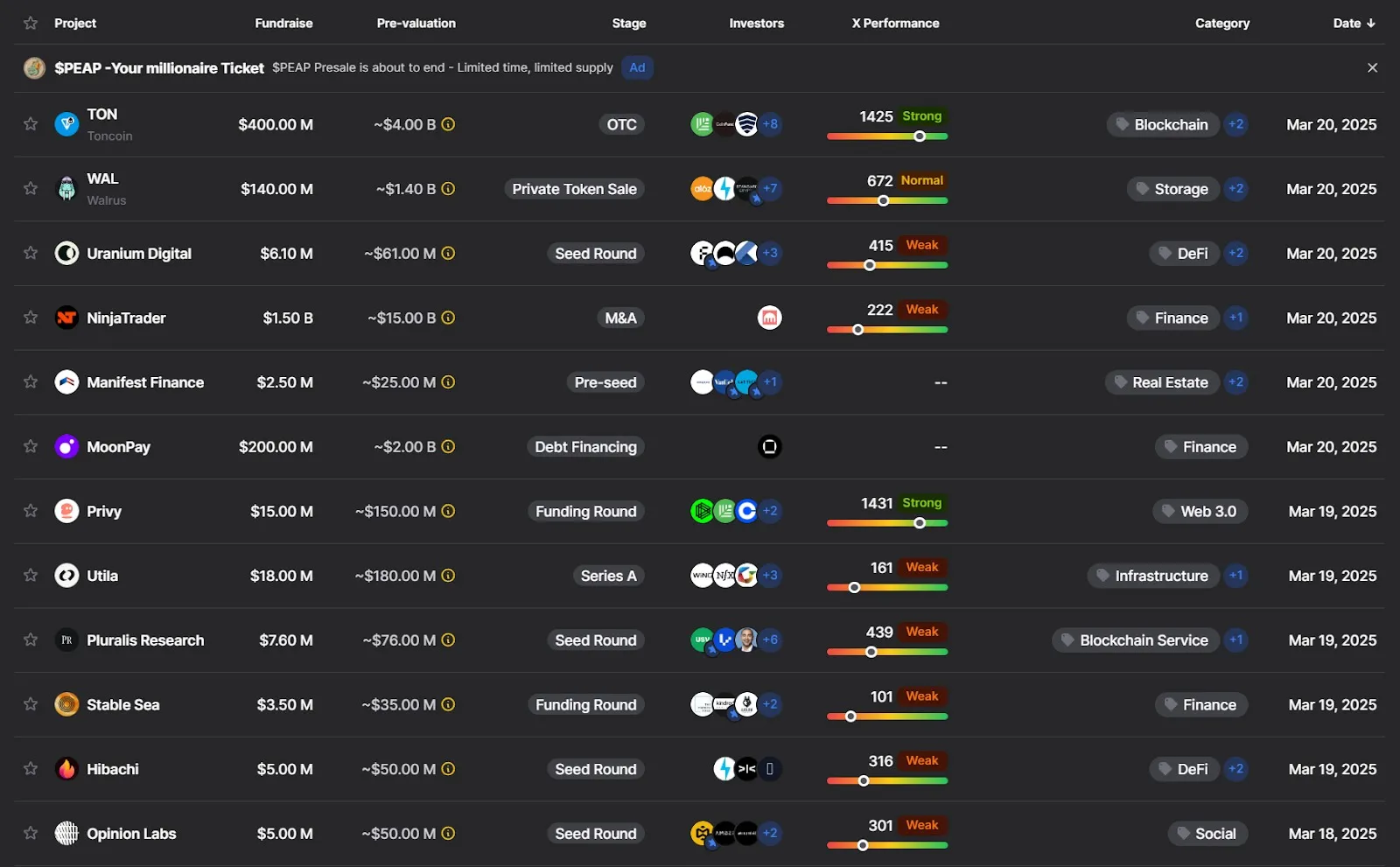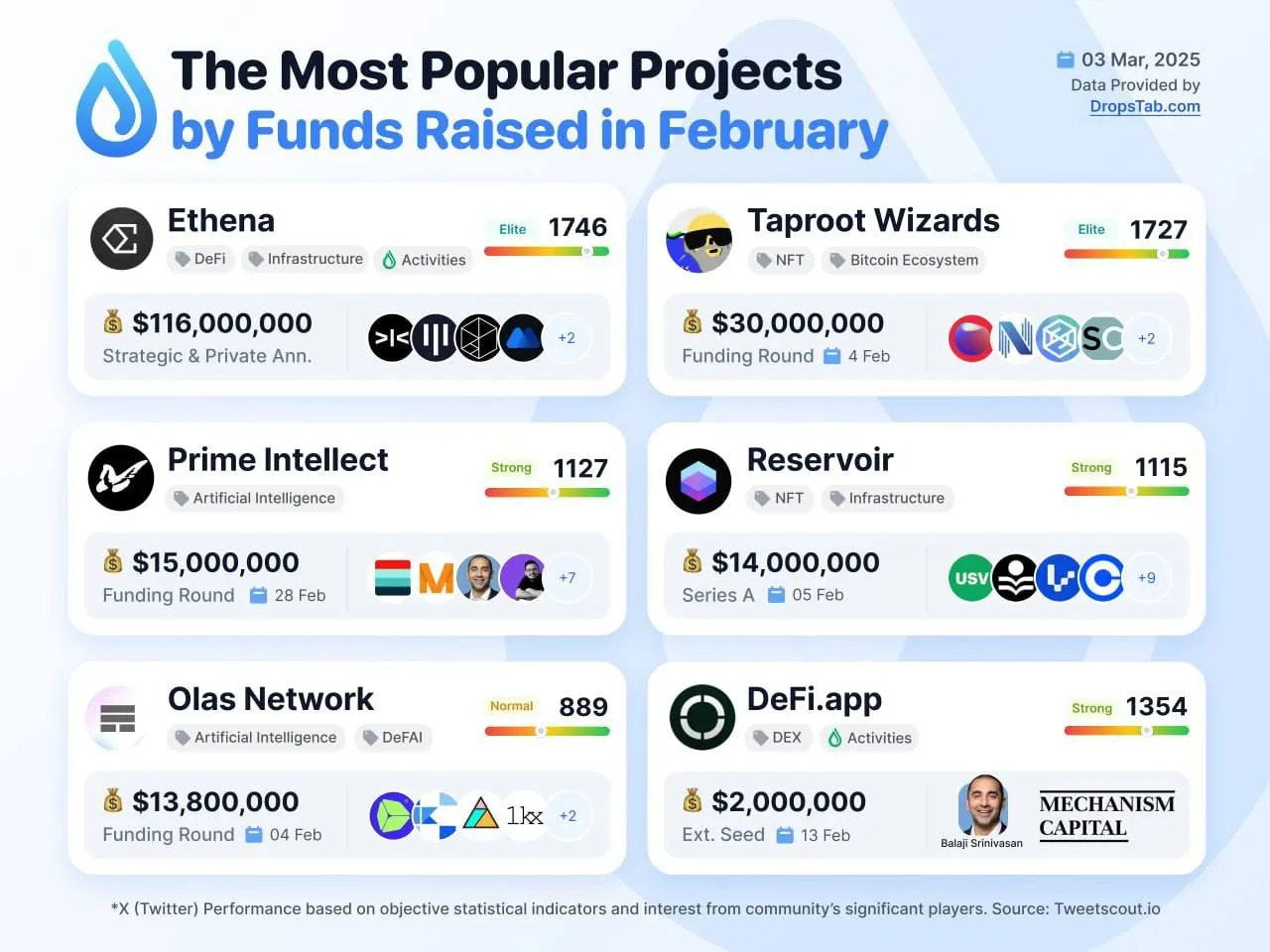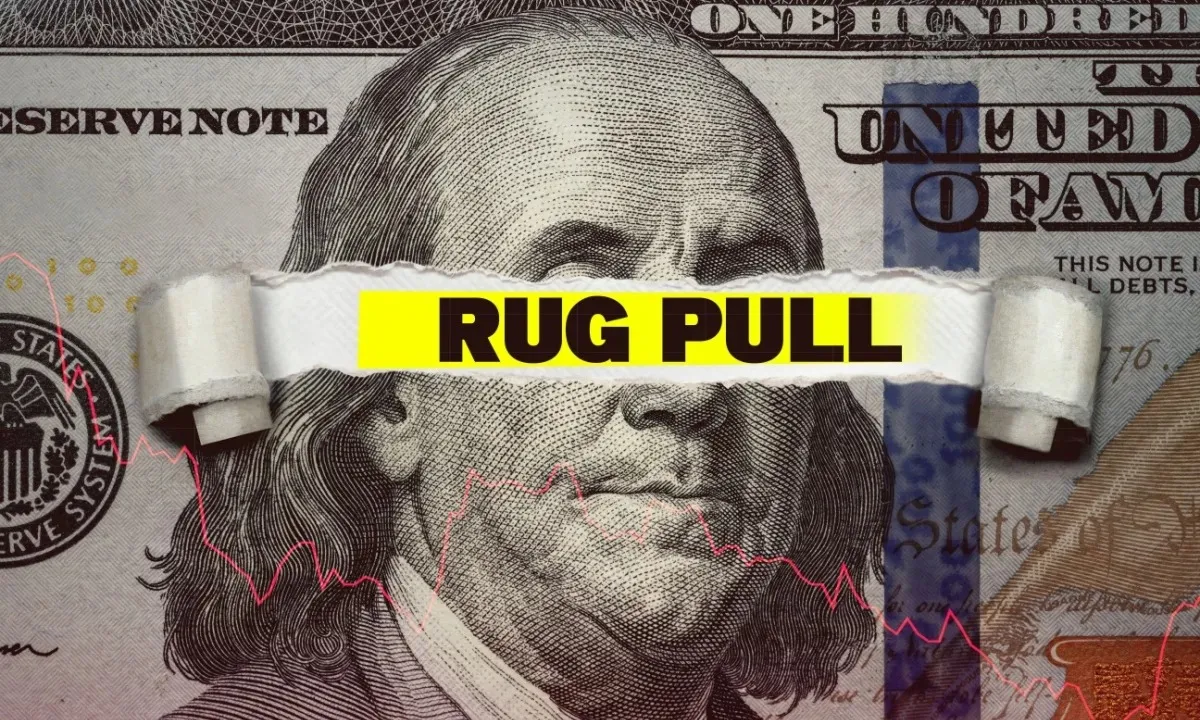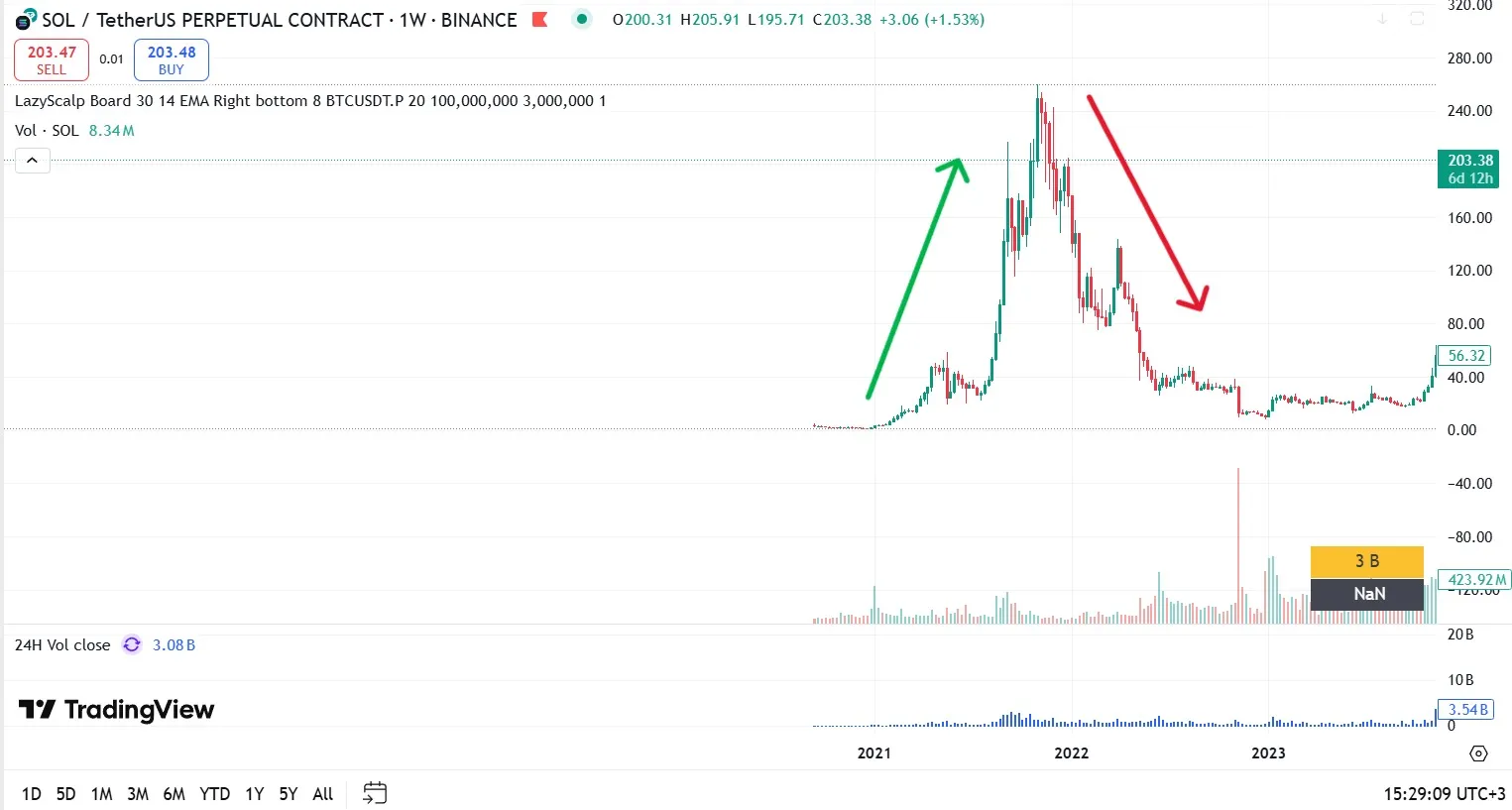
Crypto Fundraising: Ways and Strategies to Raise Capital

In the cryptocurrency environment, almost no project can do without attracting investors and their funds. Because it is thanks to this that teams can fully realize their ideas. At the same time, fundraising resources impose a number of obligations on both parties and it is necessary to know about them.
What is Crypto Fundraising?
Fundraising is the process of raising capital to fund cryptocurrency and blockchain projects using digital assets. aThanks to decentralization and global access to blockchain technology, cryptocurrency fundraising offers startups the opportunity to obtain funding without traditional financial intermediaries.
Main methods of fundraising in the crypto industry
Crypto fundraising methods can be categorized into five main ones.
ICO (Initial Coin Offering)
ICO is one of the first cryptocurrency fundraising methods that allows projects to issue and sell their own tokens to raise funds. This method is particularly popular among startups as it does not require strict regulation. However, high fraud rates and lack of investor protection have made ICOs less popular in recent years.
IDO (Initial DEX Offering)
IDO is analogous to ICO, but using decentralized exchanges (DEX). Projects list their tokens on DEXs where users can buy them directly. IDO provides more liquidity and transparency, but requires active marketing and community involvement.
IEO (Initial Exchange Offering)
IEO is a fundraising process organized by a centralized cryptocurrency exchange. The exchange acts as an intermediary, vetting projects and securing transactions. However, IEO requires significant listing costs and strict compliance with platform requirements.
STO (Security Token Offering)
STO is a regulated form of capital raising in which investors receive security tokens that grant certain rights (e.g. a stake in a company or dividends). This method complies with legal requirements, which increases investor confidence, but requires a high level of legal expertise.
NFT and Token Crowdsale
NFTs (non fungible tokens) are used to raise funds through the sale of unique digital assets.
Token Crowdsale is the mass sale of tokens through various platforms, including social media and marketplaces.
How the investment attraction process works

1. Project preparation
Before attracting investment, it is necessary to prepare the project so that it looks attractive to potential investors.
Analyzing the idea and market niche
-
Identifying the problem the project solves.
-
Analyzing competitors and unique advantages (USP).
-
Researching the target audience.
Creating tokenomics
-
Developing the mechanics of the token (utility, governance, security).
-
Defining issuance, distribution, and methods of use.
-
Deflation/inflation mechanisms.
Team building
-
Strong developers, marketers, lawyers.
-
Consultants and enablers from well-known crypto projects.
-
Transparency of information about the team.
MVP (minimum viable product) development
-
Prototype or beta version of the platform.
-
Smart contracts and blockchain infrastructure.
2. Choosing an investment attraction model
There are several main ways to raise funds in the cryptosphere.
ICO (Initial Coin Offering) - Initial Coin Offering of tokens
-
Investors buy tokens at an early stage.
-
Good tokenomics and marketing is needed.
-
There were many fraudulent ICOs in 2017-2018, so trust has decreased.
IEO (Initial Exchange Offering) - Placing tokens through exchanges
-
The project conducts the sale through a crypto exchange.
-
The exchange conducts due diligence on the project.
-
Investor confidence is higher, but there are high commissions.
IDO (Initial DEX Offering) - Placement via DEX
-
Selling through decentralized exchanges (Uniswap, PancakeSwap).
-
Fast liquidity.
-
Fewer regulatory barriers.
STO (Security Token Offering) - Selling tokens tied to real assets
-
Subject to securities laws.
-
Investors become entitled to dividends, company earnings.
-
High level of trust, but complex regulation.
Attracting venture capital investments (VCs, DAOs, funds)
-
Crypto funds (A16Z, Binance Labs, Sequoia, Pantera Capital).
-
DAOs (decentralized autonomous organizations) that allocate funds to promising projects.
-
Individual investors (angels).
3. marketing and community building
Crypto projects actively use marketing to attract an audience.
Whitepaper and Pitch Deck creation
- Whitepaper is a technical document describing the project.
Details about why this document is needed and what is useful in it for users, told in our article - What is a Whitepaper in cryptocurrency - in simple words.
- Pitch Deck - investor presentation.
Website and social media launch
-
Official website with roadmap, documentation, team.
-
Telegram, Twitter, Discord - key platforms.
Airdrop and Bounty programs
-
Distribution of tokens for activity in social networks.
-
Motivating participants to create content.
Listing on CoinMarketCap, CoinGecko
-
Confirmation of the project status in the crypto space.
-
Availability for traders and analysts.
4. Conducting funding rounds

The process of raising investments is divided into several stages.
Pre-Seed and Seed rounds
-
Early investment from business angels, incubators.
-
Focus on technology and team development.
Private Sale
-
Attracting large investors at a reduced price.
-
Usually held before a public sale.
Public Sale (ICO, IDO, IEO)
-
The main stage of attracting retail investors.
-
Sale via website, exchange, lunchepads.
5. Post-investment stage
After raising funds, it is important to realize the stated promises.
Listing of tokens on exchanges
-
CEX (Binance, Bybit, OKX, HTX, Gate. io, BingX) - increases liquidity.
-
DEX (Uniswap, SushiSwap, StonFi, Jupiter) - availability without intermediaries.
Ecosystem and partnerships development
-
New product launches, integrations with other platforms.
-
Supporting liquidity (DeFi, staking).
Maintaining community trust
-
Regular reports and updates.
-
AMA sessions, audience outreach.
Pros and cons of different methods
ICO (Initial Coin Offering)
Pros:
-
Ease of launch - the project does not require complex legal procedures.
-
High fundraising potential - ICOs raised billions of dollars in 2017-2018.
-
Early liquidity for investors - tokens can be quickly sold on the secondary market.
-
Decentralization - investors can participate without intermediaries (exchanges, banks).
Minuses:
-
High risk of fraud - there have been many scam projects due to lack of strict regulation.
-
Potential legal problems - in many countries ICO falls under securities regulation.
-
Low trust - after a wave of fraudulent ICOs, investors have become more cautious.
-
Liquidity issues - many tokens were never accepted by exchanges.
IDO (Initial DEX Offering)
Pros:
-
Instant liquidity - tokens are immediately available on DEX (Uniswap, PancakeSwap).
-
Transparency and decentralization - investors can participate without centralized exchanges.
-
Accessibility for all - no geography or KYC restrictions.
-
Low listing costs - projects do not pay commissions to centralized exchanges.
Cons:
-
Lack of verification - any project can conduct an IDO, which increases the risk of fraud.
-
High volatility - token prices can fall sharply immediately after the IDO.
-
Problems with scams - “rug pull” schemes are possible (creators disappear with money).
-
Limited marketing opportunities - without CEX support it is harder to attract large investors.
IEO (Initial Exchange Offering)
Pros:
-
High level of trust - exchanges audit projects.
-
Guaranteed liquidity - tokens are immediately traded on the exchange.
-
Wide audience of investors - exchange users can easily participate.
-
Marketing support - exchanges actively promote IEO.
Minuses:
-
High commissions - exchanges take large percentages of the funds collected.
-
Centralization - requires exchange approval and KYC/AML for investors.
-
Risk of price manipulation - exchanges can artificially inflate the price of a token.
-
Less decentralization - exchanges control the process, which goes against the philosophy of crypto.
STO (Security Token Offering)
Pros:
-
Legal security - STO complies with securities laws.
-
High level of investor confidence - unlike ICOs, there is regulation.
-
Less risk of fraud - projects undergo strict checks.
-
Access to institutional investors - funds and banks can invest in STOs.
Minuses:
-
Complex regulation - projects must comply with laws (SEC, EU).
-
Long startup process - licensing and legal clearance required.
-
Limited access for retail investors - usually only accredited investors can participate.
-
Less liquidity - STO tokens are less likely to be traded on exchanges.
NFT and Token Crowdsale
Pros:
-
Flexibility - unique NFTs, asset rights, in-game items can be sold.
-
High community engagement - users buy NFTs not only for profit, but also to support the project.
-
Early access to the ecosystem - NFTs can give the right to participate in DAO, access to closed features.
-
Ease of startup - you can create an NFT sale without complicated procedures.
Cons:
-
Market is overheated and volatile - NFT prices can drop dramatically.
-
High risk of fraud - plagiarism and speculation are common.
-
Legal uncertainty - NFTs may be subject to regulation in some countries.
-
Limited liquidity - NFT tokens are harder to sell than regular cryptocurrencies.
Regulatory aspects and legal risks
Key Regulatory Aspects in Crypto Fundraising
-
Token status - are tokens securities or utilitarian assets?
-
Company registration - where is the best place to register a business to minimize risks?
-
Licensing - are licenses required for fundraising?
-
Application of anti-money laundering (AML) and customer identification (KYC) laws - are they mandatory?
-
Tax obligations - how are funds raised in cryptocurrency taxed?
Main legal risks of crypto fundraising
1. Recognition of tokens as securities
If a token is recognized as a security, the project faces:
-
Obligation to undergo registration with regulatory authorities (SEC, FINMA, ESMA).
-
Sanctions for illegally attracting investments.
-
Restriction of access to certain markets.
2. Violation of anti-money laundering (AML) and customer identification (KYC) laws
-
Requiring KYC (Know Your Customer) procedures for all investors.
-
Possibility of blocking funds for non-compliance with AML (Anti-Money Laundering) regulations.
3. Problems with taxation
-
ICO/IDO income is taxable in some countries (e.g. USA).
-
Using offshore jurisdictions may lead to additional audits.
4. Risk of fraud and lawsuits
-
Investors’ lawsuits - if a project fails to deliver on promises, investors can sue.
-
Rug Pull - Teams that disappear after fundraising risk criminal prosecution.
5. Blocking Bank Accounts
-
Banks can freeze the accounts of companies associated with cryptocurrency.
-
Possible difficulties in converting crypto assets to fiat.
Strategies for successful fundraising
The more a project proves itself in the crypto industry, the more loyal investors are to it. To increase this loyalty and the end result in the form of fundraising, teams use two main strategies.
Community Engagement
-
Hosting AMA sessions, social media activity and forums.
-
Using referral programs and bounty campaigns.
-
Maintaining open and transparent communication.
Partnerships and listings on exchanges
-
Partnering with well-known blockchain companies.
-
Listing tokens on leading exchanges to increase liquidity.
-
Participation in crypto forums and conferences.
Risks and fraud in Crypto Fundraising
The main risks in crypto fundraising are:
1. Financial Risks
The crypto market is extremely volatile, which makes investing risky:
-
Sharp fluctuations in token prices - investors can lose money if the price of a token drops immediately after listing.
-
Lack of liquidity - even successful projects can face low demand for their tokens.
-
Market manipulation - teams or large investors can artificially inflate the token price (Pump & Dump).
2. Legal and Regulatory Risks
Crypto fundraising remains in a gray area in most countries:
-
ICO/IDO bans in some countries - China, India and a number of other states completely ban such schemes.
-
Recognition of a token as a security (Security Token) - if the token falls under SEC (USA) or MiCA (EU) regulation, the project faces fines.
-
Lack of legal protection for investors - in case of a scam or bankruptcy of the project, it is practically impossible to recover funds.
3. Technical risks
Crypto projects depend on the reliability of technology:
-
Smart contract vulnerabilities - bugs in the code can lead to loss of investor funds (DAO Hack 2016).
-
Hacking attacks - exchanges, DeFi platforms and wallets are susceptible to hacking.
-
Private keys and loss of access - if an investor loses their wallet keys, funds cannot be recovered.
The main types of fraud in Crypto Fundraising are:
1. Rug Pull - “Walking out with money”.

Project creators raise money through an ICO/IDO and suddenly disappear. Signs of a Rug Pull:
-
No real product - website, roadmap and whitepaper look superficial.
-
Most of the tokens are held by the team - developers can instantly sell tokens and crash the price.
-
Pseudonymous or anonymous founders - no information about the team on LinkedIn.
-
Unrealistic promises - guaranteed profits, “revolutionary technology”.
Examples:
-
Squid Game Token (2021) - founders stole $3.3 million by banning token sales before the Rug Pull.
-
Thodex (2021) - Turkish exchange disappeared with $2 billion in users.
2. Ponzi schemes and pyramid schemes
Projects promise guaranteed income through new investors, but have no real business.
Signs:
-
Promise of high fixed interest - 10-50% profit per month.
-
Lack of real product - money is attracted only at the expense of new investors.
-
Multi-level referral system - the more people you bring in, the higher the income.
Examples:
-
Bitconnect (2017-2018) - the largest crypto pyramid scheme where investors lost $2.5 billion.
-
PlusToken (2019) - a Chinese scam that raised $3 billion.
3. Fake ICOs and IDOs
Fake startups raise funds but don’t develop a product.
How to recognize:
-
Fake partnerships - the project claims to partner with big companies, but this cannot be verified.
-
Lack of MVP (minimum viable product) - the project exists only on paper.
-
Hidden owners - lack of contacts and data about the team.
Example:
- Prodeum (2018) - raised money and disappeared, leaving the word “penis” on the website.
4. Pump & Dump - Artificially inflating the price

Insiders buy tokens, promote them on social media, and then sell them en masse, crashing the market. Read more in our article - What is a pump and dump in cryptocurrency - in simple words.
Signs:
-
Aggressive marketing - mass spamming on Telegram, Twitter, YouTube.
-
Manipulation of large orders - sudden price spikes without news.
-
Sudden token dump - team or large investors sell the asset, collapsing the price.
Example:
- SaveTheKids (2021) - bloggers promoted the token and then sold their shares, leaving investors at a loss.
5. Phishing and fake websites
Hackers create copies of popular websites, luring users to enter private keys.
How not to get caught:
-
Check the site URL - scammers replace letters (binance.com → bínance.com).
-
Don’t enter private keys - no project requires this.
-
Use official sources - check links through CoinGecko, CoinMarketCap.
6. Smart contract hacks and exploits
Even legitimate projects can be vulnerable to hackers.
Examples:
-
Poly Network (2021) - hackers stole $610 million but then gave it back.
-
Ronin Network (Axie Infinity, 2022) - $620 million hack.
Conclusion
Crypto Fundraising offers great opportunities for startups, but requires careful planning, regulatory compliance and active engagement with investors and community. The success of a project depends on its transparency, practical benefits for crypto, and community support.
FAQ
1. How to attract investors to a crypto project?
A quality whitepaper, an active community, transparent tokenomics and listing on well-known exchanges will help attract investors.
2. Which platforms and exchanges are most suitable for IDO and IEO?
For IDO: Uniswap, PancakeSwap, Balancer.
For IEO: Binance, Bybit, OKX, HTX, Gate. io, BingX.
3. How to minimize fraud risks when investing in crypto projects?
Study documentation, verify the team, analyze community feedback and avoid projects without transparent information.
4. What are the risks associated with participating in crypto fundraising?
Regulatory restrictions, market volatility, fraud risk and technical vulnerabilities.
5. How to check the legitimacy of a project before investing?
Check whitepaper, team, partners, smart contract audit and reputation on crypto platforms.